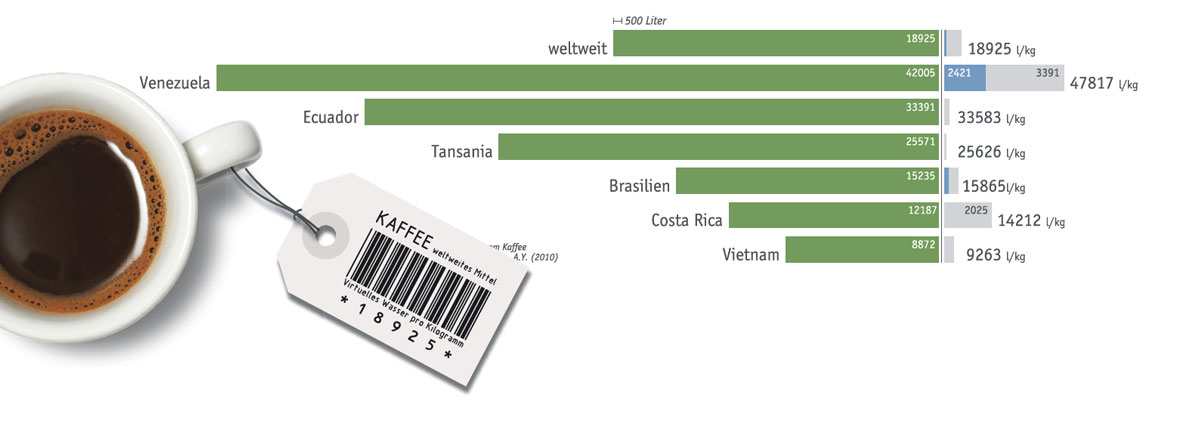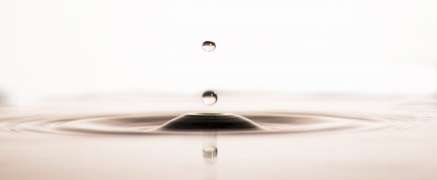In addition to the CO2 footprint, there is also a water footprint.
1 cup of coffee needs 132 l of water.
- It was developed by the English geographer John Anthony Allan in 1995.
- While 150 l of water are needed daily for showers, cooking and co, the rest of the habits, depending on the lifestyle, are between 2500 and 5000 l of virtual water.
- The concept of “virtual water” shows how much water has been consumed during the manufacturing process for a given product. It leaves a water footprint.
- 1kg of wheat needs 1,000 l of water, 1 kg of beef about 15,000 l of water!
- The more virtual water is consumed for a pair of trousers, a salad or a kilogram of steak, the more problematic and ecologically questionable is the product.
- However, natural rainwater (green) and artificial irrigation (gray) should be distinguished.
- Against the background of the threat of water scarcity on the earth, dry emerging countries and the threatening war on the water, help to develop an awareness for more sustainability.
Advertisment
What does this mean for coffee?
- How much water does a coffee tree use during growth?
- How much water is needed for each step of the coffee production and processing.
- How much water is used in packaging, how much is used for shipping?
- The virtual water consumption for 1 kg of roasted coffee is calculated from this.
How much water is needed?
- Germany mainly imports coffee from Brazil and Vietnam.
- On average, 18,925 l of water are needed for the production of 1 kg of roasted coffee.
- This is 132 l for 1 cup of coffee.
- But there are big differences from country to country.
- Coffee from Vietnam, Ethiopia or Costa Rica needs only between 8,000 and 15,000 l per kg, because the cultivation areas are more productive.
- The ones with more than 25,000 l are countries such as Venezuela, Ecuador or Tanzania.
- At the same time it is not that water is wasted here, since most of the water is rainwater (green)
- In Brazil, for example, there are coffee plantations in areas with dry forests or savannahs in the state of Bahia – without shade trees in full sun.
- Central irrigation systems are used on these industrially cultivated plantations (grey).
Advertisment
What can I do?
- In order to reduce the personal coffee water footprint, one can drink Arabica instead of Robusta coffee and prefer coffee from mountainous countries. On good coffee you find this information.
- Also the processing of the coffee plays a role – so the wet processed of course consumes more water than the dry.
- Coffee with organic quality as it is produced without fertilizer and pesticides.
- Especially the “gray” water content and thus the harmful environmental effects can be saved in this way.

Source: http://virtuelles-wasser.de
By the way, on the 22nd March is #worldwaterday
For advertising links on this page the dealer may pay a commission. These advertising links are marked with an asterisk (*) – images and banners are marked with “Ads” or “Advertisment”. There are no costs for you. Find more information in the data protection regulations here.








